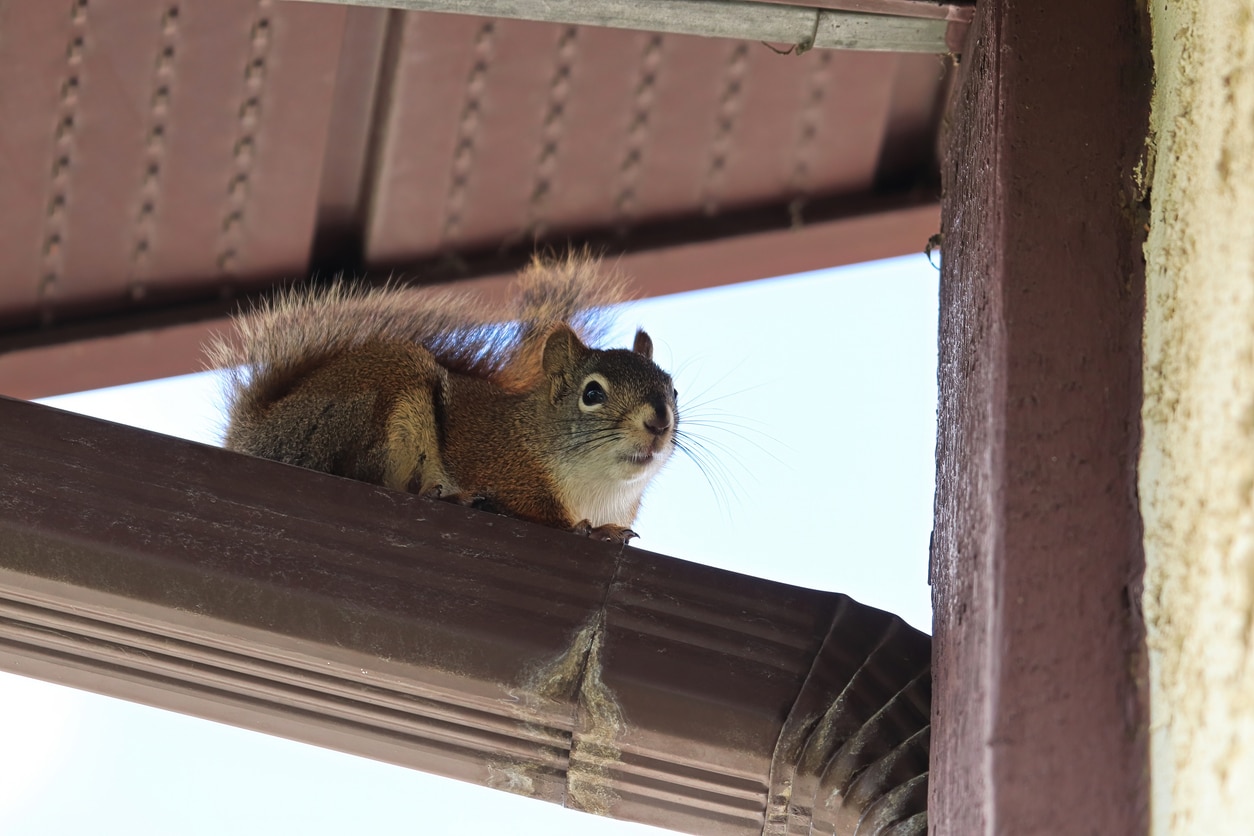Need Wildlife Removal ASAP?
Give us a call for 24/7 Emergency Wildlife Control & Removal in Dallas/Fort Worth.
(817) 606-7607Contact UsContact UsFrom scurrying sounds to the evidence of damage and trash, detecting the presence of wildlife in your attic is imperative to solving infestation issues. Learning about the signs of wildlife in attics can help you properly take precautions to avoid future damage. Here’s how to determine if there are critters in your attic:
Strange Noises
Unusual noises can indicate wildlife activity in the attic. Listen for scratching, scurrying, thumping, or vocalizations, especially in the evenings or early mornings, when many nocturnal species are most active. These noises could signal that rats, squirrels, raccoons, bats, or oppossums are nesting or foraging in your attic.
Foul Odors
Foul smells from the attic may indicate a wildlife infestation. Urine, droppings, and nesting materials can emit strong, pungent aromas into the air, indicating the presence of wildlife. Pay alert to any musty or ammonia-like aromas in or around your home, as they could indicate the presence of rodents, raccoons, or other critters nesting in the attic.
Visible Entry Points
Inspect the exterior of your property for any visible entrance points or damage that could allow animals to enter the attic. Look for chew marks, holes, gaps, or damaged vents, fascia boards, and roofing materials that could act as access points for wildlife. In addition, look for loose or missing roof shingles, damaged screens, and exposed vents or chimneys that could allow critters to find shelter.
Droppings and Tracks
One of the signs of wildlife in attics are tracks or droppings. Examine the attic for any droppings or trails left by wildlife. Rodent droppings are usually small, black, and pellet-shaped, but raccoon droppings are bigger, tubular, and commonly seen in communal latrines. Look for tracks or footprints in dust, insulation, or piled trash, which might reveal the type and size of animals living in the attic.
Damage to Property
Wildlife infestations in attics can cause significant damage to buildings and infrastructure. Inspect the attic insulation, wiring, ducts, and stored items for evidence of gnawing, chewing, or nesting activity. Look for chewed cables, shredded insulation, torn fabric, and damaged possessions, which could indicate that mice, squirrels, or other animals are nesting or foraging in the attic.
Nesting Materials
Wildlife nesting materials including leaves, twigs, feathers, and shredded insulation can gather in the attic, indicating wildlife activity. Look for nests or nesting sites in remote locations, such as beneath insulation, in rafters, or within stored boxes or containers. Identifying and eliminating nesting materials is critical for controlling wildlife infestations and avoiding future harm.
Visual Confirmation
Inspect the attic for signs of wildlife activity. Use a flashlight and protective clothing to safely walk the attic and inspect hard-to-reach locations like eaves, rafters, and corners. Look for creatures and indicators of movement or activity, such as rustling sounds or eyes that reflect light in the dark.
Recognizing signs of wildlife in attics is the first step in dealing with infestations and safeguarding your property from damage. Whether through humane trapping and removal, exclusion measures, or professional wildlife control services, it is critical to handle wildlife infestations as soon as possible to avoid further damage.
Are you in need of wildlife removal? Our friendly operators at Dallas Fort Worth Wildlife Control are available now at (817) 606-7607. Find out more about our wildlife removal in Arlington and Fort Worth, TX.


